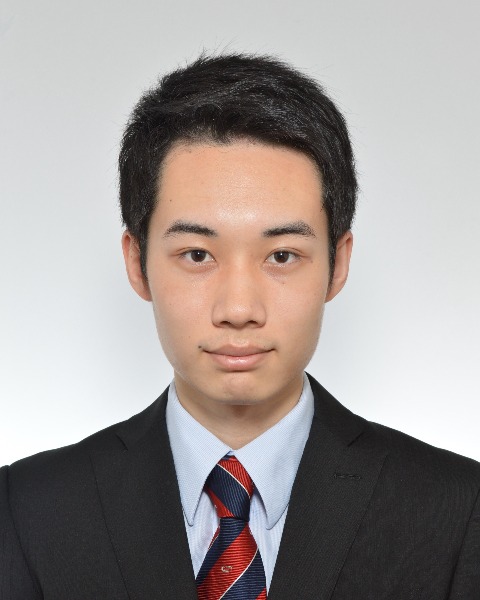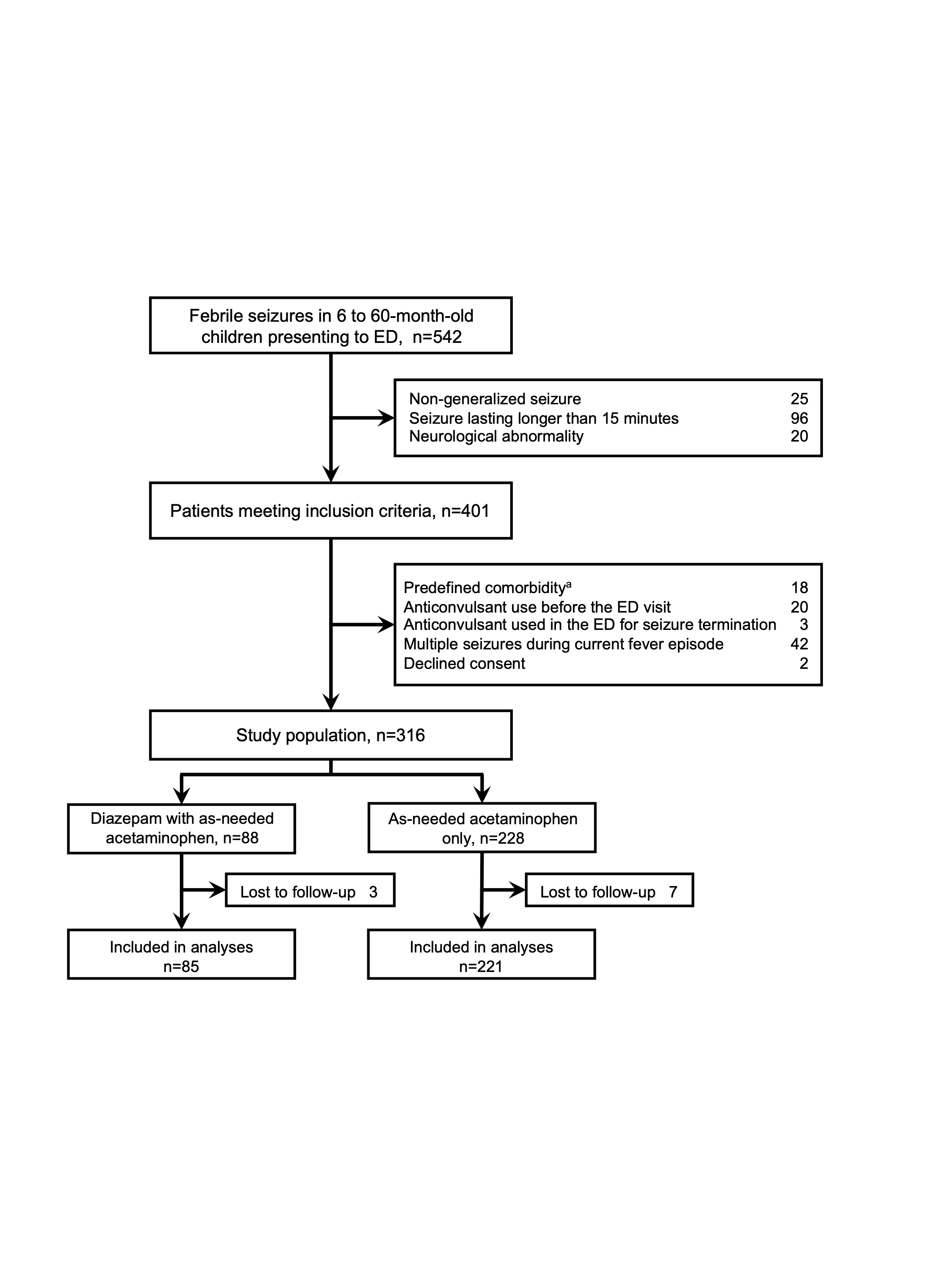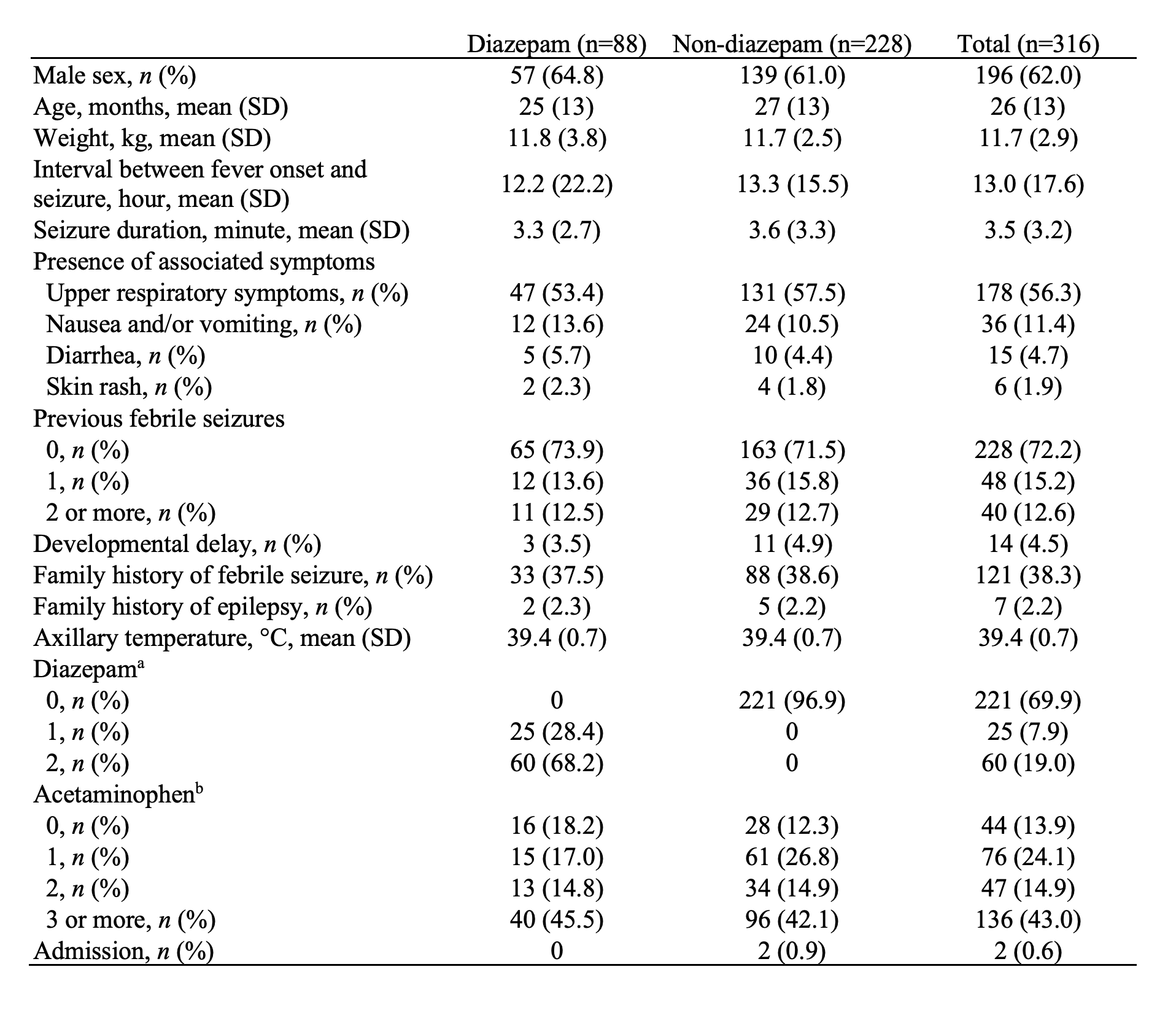Pediatric Neurology
Category: Abstract Submission
Neurology 1: Clinical Pediatric & Neonatal Neurology
538 - Efficacy, safety, and economic impact of diazepam suppositories with as-needed acetaminophen for prevention of seizure recurrence during the same fever episode in children with simple febrile seizures
Friday, April 22, 2022
6:15 PM - 8:45 PM US MT
Poster Number: 538
Publication Number: 538.139
Publication Number: 538.139
Miki Tanaka, Tokyo Metropolitan Children's Medical Center, Toshima-ku, Tokyo, Japan; Qianzhi Wang, Machida Municipal Hospital, Machida, Tokyo, Japan; Yoshihiko Morikawa, Tokyo Metropolitan Children's Medical Center, Fuchu, Tokyo, Japan; Junya Tsukamoto, tokyo metropolitan children’s medical center, suginami-ku, Tokyo, Japan; Hiroaki Sammori, Tokyo Metropolitan Children's Medical Center, fuchu, Tokyo, Japan; Ken Takehira, Tokyo Metropolitan Children's Medical Center, choufu city, Tokyo, Japan; Mizuki Yano, Tokyo Metropolitan Children's Medical Center, Narita, Chiba, Japan; Satoshi Miyama, Tokyo Metropolitan Children’s Medical Center, Saitama -city, Saitama, Japan; Saki Fujita, Tokyo Metropolitan Children's Medical Center, Fuchu, Tokyo, Japan; Kazutoshi Narita, Tokyo Metropolitan Children's Medical Center, Fuchu, Tokyo, Japan; Shun Kishibe, Tokyo Metropolitan Children's Medical Center, Yokohama-City, Kanagawa, Japan; Emi Kawaguchi Morikawa, Tokyo Metropolitan Children's Medical Center, Fuchu, Tokyo, Japan; Satoko Suzuki, Tokyo Metropolitan Children's Medical Center, Fuchu, Tokyo, Japan; Hiroshi Hataya, Tokyo Metropolitan Children's Medical Center, Fuchu, Tokyo, Japan

Qianzhi Wang, MD
Medical doctor
Machida Municipal Hospital
Machida, Tokyo, Japan
Presenting Author(s)
Background: Preventing seizure recurrence during the same fever episode in patients with simple febrile seizures (SFS) should ease the physical and psychosocial burden on children and their families while reducing medical costs. In Japan, some pediatricians prefer to prescribe diazepam suppositories to patients with SFS in addition to as-needed acetaminophen, while others prefer to prescribe as-needed acetaminophen alone.
Objective: We aimed to evaluated the efficacy, safety, and economic impact of diazepam suppositories with as-needed acetaminophen for prevention of seizure recurrence during the same fever episode in pediatric simple febrile seizures.
Design/Methods: The present, single-center, prospective, observational study was conducted from July 29, 2019 to February 15, 2021 at a children’s hospital. Children aged 6 months to 60 months presenting to the emergency department with suspected SFS were included. Either diazepam suppositories with as-needed acetaminophen (diazepam group) or as-needed acetaminophen alone (non-diazepam group) was prescribed primarily based on each physician's regular practice pattern. The primary outcome was seizure recurrence during the same fever episode. The secondary outcomes included the incidence of central nervous system (CNS) pathologies, adverse events, and medical costs.
Results: Of the 316 participants, 228 (72.2%) had their first febrile seizure. Diazepam (0.3-0.5 mg/kg for up to two doses) was administered to 88/316 patients (27.8%). The outcomes were available for 306 patients. The recurrence rate was 3.5% (3/85) in the diazepam group and 12.2% (27/221) in the non-diazepam group (relative risk: 0.29 [95%CI: 0.09-0.93]; P=0.03). The adjusted odds ration of diazepam administration against recurrence was 0.23 (95%CI: 0.07-0.78; P=0.02). None of the patients had a CNS pathology. No severe adverse events occurred although mild ones, such as ataxia (29.4% vs 18.7%) and drowsiness (27.1% vs 22.4%), were observed more often in the diazepam group. The median medical cost was US Dollars 199 (IQR: 86-244) for the diazepam group and US Dollars 202 (IQR: 114-242) for the non-diazepam group.Conclusion(s): Diazepam with as-needed acetaminophen may safely and inexpensively reduce seizure recurrence during the same fever episode in children with SFS.
Figure 1. Patient flow chart. a Predefined comorbidities included epilepsy, intracranial neoplasm, hydrocephalus, inborn errors of metabolism, hypoxemic ischemic encephalopathy, and multiple congenital anomalies including chromosomal disorders. Abbreviation: ED, emergency department.
a Predefined comorbidities included epilepsy, intracranial neoplasm, hydrocephalus, inborn errors of metabolism, hypoxemic ischemic encephalopathy, and multiple congenital anomalies including chromosomal disorders. Abbreviation: ED, emergency department.
Table 1. Patient characteristics a Data were missing for 3 patients in the diazepam group (all 3 received at least 1 dose, but the total dosage was unknown) and 7 patients in the non-diazepam group.
a Data were missing for 3 patients in the diazepam group (all 3 received at least 1 dose, but the total dosage was unknown) and 7 patients in the non-diazepam group.
b Data were missing for 4 patients in the diazepam group and 9 patients in the non-diazepam group.
Abbreviations: SD, standard deviation
Objective: We aimed to evaluated the efficacy, safety, and economic impact of diazepam suppositories with as-needed acetaminophen for prevention of seizure recurrence during the same fever episode in pediatric simple febrile seizures.
Design/Methods: The present, single-center, prospective, observational study was conducted from July 29, 2019 to February 15, 2021 at a children’s hospital. Children aged 6 months to 60 months presenting to the emergency department with suspected SFS were included. Either diazepam suppositories with as-needed acetaminophen (diazepam group) or as-needed acetaminophen alone (non-diazepam group) was prescribed primarily based on each physician's regular practice pattern. The primary outcome was seizure recurrence during the same fever episode. The secondary outcomes included the incidence of central nervous system (CNS) pathologies, adverse events, and medical costs.
Results: Of the 316 participants, 228 (72.2%) had their first febrile seizure. Diazepam (0.3-0.5 mg/kg for up to two doses) was administered to 88/316 patients (27.8%). The outcomes were available for 306 patients. The recurrence rate was 3.5% (3/85) in the diazepam group and 12.2% (27/221) in the non-diazepam group (relative risk: 0.29 [95%CI: 0.09-0.93]; P=0.03). The adjusted odds ration of diazepam administration against recurrence was 0.23 (95%CI: 0.07-0.78; P=0.02). None of the patients had a CNS pathology. No severe adverse events occurred although mild ones, such as ataxia (29.4% vs 18.7%) and drowsiness (27.1% vs 22.4%), were observed more often in the diazepam group. The median medical cost was US Dollars 199 (IQR: 86-244) for the diazepam group and US Dollars 202 (IQR: 114-242) for the non-diazepam group.Conclusion(s): Diazepam with as-needed acetaminophen may safely and inexpensively reduce seizure recurrence during the same fever episode in children with SFS.
Figure 1. Patient flow chart.
 a Predefined comorbidities included epilepsy, intracranial neoplasm, hydrocephalus, inborn errors of metabolism, hypoxemic ischemic encephalopathy, and multiple congenital anomalies including chromosomal disorders. Abbreviation: ED, emergency department.
a Predefined comorbidities included epilepsy, intracranial neoplasm, hydrocephalus, inborn errors of metabolism, hypoxemic ischemic encephalopathy, and multiple congenital anomalies including chromosomal disorders. Abbreviation: ED, emergency department.Table 1. Patient characteristics
 a Data were missing for 3 patients in the diazepam group (all 3 received at least 1 dose, but the total dosage was unknown) and 7 patients in the non-diazepam group.
a Data were missing for 3 patients in the diazepam group (all 3 received at least 1 dose, but the total dosage was unknown) and 7 patients in the non-diazepam group.b Data were missing for 4 patients in the diazepam group and 9 patients in the non-diazepam group.
Abbreviations: SD, standard deviation
